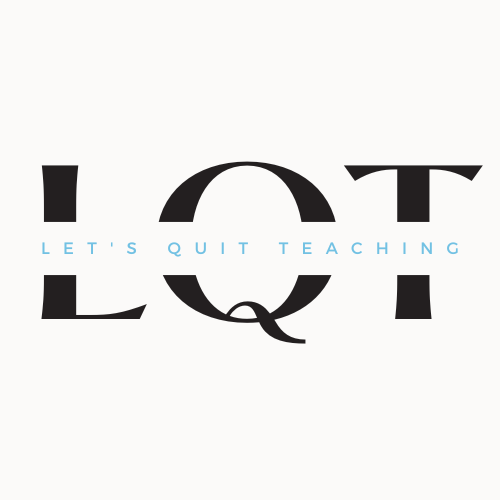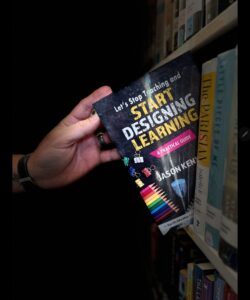We have ALL been there. Sitting in a room of our peers. Listening to a presenter while watching a Powerpoint. Even worse, listening to a presenter read directly from the Powerpoint. All the while, we have lessons to plan, parents to call, papers to grade and the million other things that come daily with being an educator. But, this professional learning/professional development was scheduled and provided by the school system. We leave many of these frustrated for a variety of reasons. However, we as professionals DO need to stay up to date with techniques, strategies, research and technologies, just like doctors, lawyers and other professionals. So, what can be done with PL/PD to make it an experience that is valued, productive and even looked forward to?
The key is to design teacher PL/PD with active learning in mind. The problem with most sessions is that they are just like the passive, traditional teaching educators have been providing for students for years. That is also the irony. We as educators loathe the “sitting and getting” passive teaching provided to us in PL/PD, but we have been practicing this for years in our own classrooms. We now know what it takes for learning to happen with our students, PL/PD can be designed the same way to be engaging, effective and relevant. The following are some basic, active learning elements to design into any PL/PD.
Have a Learning Target(s) for the Meeting
Just as a runner needs to know where the finish line is before ever starting the race, students (and teachers as students) need to know what the goal for the learning is for the day upfront. Teachers in PL/PD need to have some target to shoot for in their learning. They need to know it from the very beginning so that they can engage with any prior knowledge or experience they may have already in order to bring that to the learning of the day, making it a more relevant experience. These learning targets for PL/PD should hopefully be based on the instructional needs of the faculty as well, making adjustments for where teachers already are and where they need to go next in their learning. Learning targets are an essential first step in ensuring that PL/PD has a relevant and goal-oriented focus that benefits teachers in the designing of learning for students.
Provide a Task Resulting in a Product
If I had only one wish for all PL/PD, it would be this: Design this session so that teachers will leave the learning with a product in-hand that is useful in the classroom. We know the best learning is one involving interaction and engagement, hands-on even. Teachers need rigorous learning they can dig into, explore, manipulate and interact with for it to mean something. No teacher ever wants to experience an informational Powerpoint, presentation or speaker that just relays information from point A to point B. Sitting through one of these types of PL/PD fills a room with just passive-aggressive (sometimes aggressive-aggressive) tension, it can be felt by everyone. Teachers need a task in PL/PD that has a learning purpose behind it, but also has a task evoking interaction. Most importantly, whatever this learning task is for the PL/PD must result in some type of product for teachers to take back to the classroom to use for learning. Teachers need something that will impact the learning they provide in hand, ready to use at the conclusion of PL/PD. Otherwise, it was just another information session or something to work on later for teachers instead of filling an immediate need for learning.
Make the Learning Collaborative
This one is obvious. Collaboration is a proven engagement tool in all learning. We do not like to learn alone. We learn from others, communicating, critically thinking, sharing, challenging, cooperating together with information and tasks that are presented to us. Students are the same way. Another bit of irony for the teachers who hate PL/PD because it is individual and passive when they may be providing the same for their students. Teachers want and need to learn from each other. They want that network of peers as not only a support in the work as they design learning together, but as support as a learner themselves as well. Quality PL/PD provides this for teachers. Any that does not, may not be worth the time, effort or money.
Have a Success Criteria
Finally, what better way to get teachers involved in learning during a PL/PD than providing a success criteria for the meeting. Teachers want to feel like they have accomplished something with their time, since that is their most valuable resource. Having a success criteria for their meeting gives them a sense of accomplishment. This is especially true when you allow the teachers themselves to assist in co-creating what success for this PL/PD will look like by the end of the session. Imagine, identifying concrete, observable traits in the learning and work happening in a PL/PD that teachers can use to monitor their learning, move themselves upward and self-assess their progress. Not only will they recognize their accomplishment of the session, they will feel motivated by the success itself. P.S. This also works with students in the classroom.
If you provide or are looking to provide PL/PD for teachers, please keep these qualities in mind. Not only will it help teachers learn and grow in their profession, it might reduce the number of heavy sighs and eye rolls at the next PL/PD session at your school. Always feel free to contact me with any questions or ideas at letsquitteaching@gmail.com or follow me on Twitter @letquitteachin


